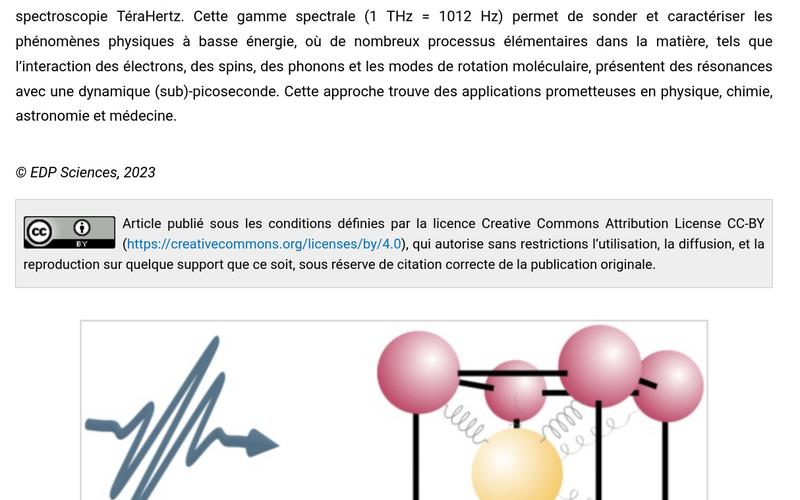Welcome to the THz Biophotonics Group
Revealing the nanostructure of Biomolecules with TeraHertz Radiations and Nanophotonics
The THz Biophotonics Group combines the unique properties of TeraHertz radiation (THz) with the precision of nanophotonics to unlock the secrets of biomolecules and their interactions. THz waves, lying between the frequencies of electronics and photonics, offer a remarkable tool for probing the structure and dynamics of biological systems. Their ability to interact with polar molecules, such as proteins and water, makes them ideal for studying the intricate relationships between these molecules in the living.

THz waves, with frequencies ranging from 0.1 to 10 THz, have wavelengths between 30 µm and 3 mm, lie between electronics and photonics. This frequency range was referred to as the "TeraHertz gap" for decades, and it was in fact a true canyon because the transistors were not able to operate at such high frequency and the lasers at such low energy. Since the 1990's, new technologies for TeraHertz wave generation and detection emerged and the gap is gradually being filled by ongoing advancements, paving the way to many different applications. Specifically towards biology THz spectroscopy leverages the specificity of light mater interaction in the different phase of mater.
- In gas phase, THz probes the roto-vibrational transition of 3-to-15 atoms polar molecules. Specifically, THz band is known to be even more specific than the infrared finger print region. In addition, Astrophysical motivations have led to the creation of databases, including a myriad of compounds enabling accurate identification. Therefore, THz spectroscopy had even be used for chemical reaction monitoring.
- In the liquid phase, THz probes the dipolar orientation of polar solvent such as water. The field is still in its early stages of exploration, both experimentally due to the variability of the picosecond dynamics of water H bond network to any physo -chemical changes (temperature, pH…), and theoretically due to the complexity of the system involved and its position at the interface of classical and quantum physics
- In the solid phase, THz probes the vibrations spreading at the nano-scale and can therefore be used to probe the nano-structure of samples. This has generated enthusiasm within the community, because the nanoscale structure of proteins determines their function. Such structural alterations at the nanoscale can have profound consequences, as exemplified by Parkinson's and Alzheimer's diseases. However, several research results have proven unreliable leading to the spread of misleading ideas that may distract from, and even obscure, fascinating and meaningful findings. The field needs to be built on a stronger and more rigorous foundation.

The group is actively addressing three challenges in THz biophotonics.
- How the signal of our experiments brings knowledge. Thanks to thorough THz time domain spectroscopy experimental work, noise evaluation and data processing, we extract the chemico-physical physico-chemical information from our samples.
- Water & TeraHertz. We face it by two sides, one in performing water solutions spectroscopy with a specific attention to the thermal stability and bringing reproducible data and knowledge to the community, the other one is the implementation of micro fluidic integration on our setups.
- Probing sub-wavelenght samples. We design, fabricate and implement devices based on waveguides, antennae and resonators to enhance the light-matter interactions for both broadband and narrow band THz spectroscopy.
Contact
Romain PERETTI
Institut d’Electronique, de Microélectronique et de Nanotechnologie (I.E.M.N. U.M.R CNRS 8520)
Laboratoire Central – Cité Scientifique –
Avenue Poincaré – CS 60069
59652 VILLENEUVE D’ASCQ CEDEX
France
📧 romain.peretti@cnrs.fr
☎ + 33 (0) 3 20 19 78 76

